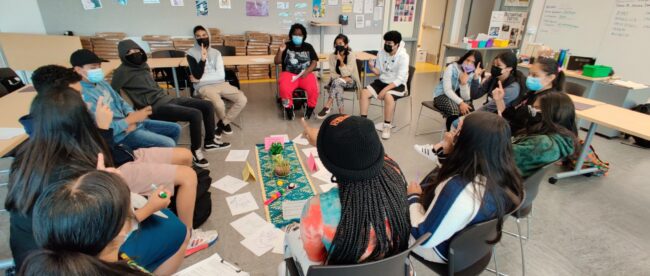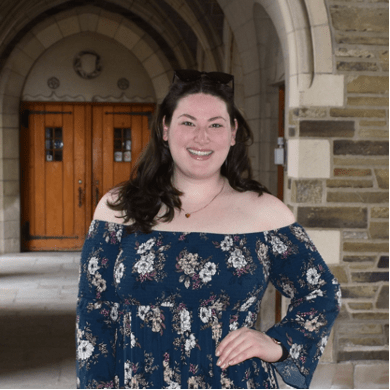Building Better Public Schools through Restorative Justice

(Source)
Fremont High School in Oakland, California used to have the highest rate of suspension in its district, 1 in 3 students dropped out, and only 1 in 4 students qualified to attend public college in California. But since the Oakland Unified School District (OUSD) made a $2.5 million investment to expand its restorative justice program throughout the district in 2017, incidents leading to suspension have dropped dramatically and the number of students who qualify for college admission has “nearly tripled.”
OUSD is one of several school districts throughout the country to adopt restorative justice practices as an alternative to retributive justice over the past two decades. David Ryan Castro-Harris of Amplify RJ defines restorative justice as “a philosophy and set of practices, rooted in Indigenous teachings, that emphasize our interconnection by repairing relationships when harm occurs while proactively building and maintaining relationships to prevent future harm.” Restorative justice conferences bring together people who have caused harm, those who have been harmed, and stakeholders from the surrounding community. All involved parties have the opportunity to share their experience and how the harm affected them before collaborating to find an appropriate solution. Quantitative research suggests that these practices have a positive impact on school climates and reduce student misbehavior and school discipline. Additionally, when restorative justice is used as an alternative to court adjudication, those who are responsible for causing harm are less likely to recidivate.
Westernized restorative justice is based on a combination of practices that Indigenous communities have used to repair harm and maintain relationships from time immemorial before the creation of the United States. The traditional Navajo response to crime is peacemaking, in which the action that caused harm is separated from the person. This system is based on k’e, which involves restoration of the offender’s dignity and worthiness, while acknowledging that they are not defined by individual actions. Peacemaking includes not just the person who caused harm and the immediate victim, but also their family members and the surrounding community, who all share an interest in rehabilitation.
Similarly, the Māori people of present-day New Zealand developed family group conferencing in response to the over-incarceration of Māori youth from troubled backgrounds. This practice involves families, professionals, and other entitled individuals coming together to develop a plan which addresses either the need for care or protection of a child or any offending by a child or young person. It is primarily family-led, and involves careful preparation before the conference, working through concerns and developing a sustainable plan during the conference, and providing the family with the necessary support to ensure the plan is completed successfully after the conference. Additionally, Kānaka Maoli (Native Hawaiians) practice ho‘oponopono, “[t]he specific family conference in which relationships [are] ‘set right’ through prayer, discussion, confession, repentance, and mutual restitution and forgiveness.”
All of these discussed forms of Indigenous restorative justice are rooted in interconnectedness, accountability, and support – a far cry from traditional Western school discipline methods such as detention, suspension, and expulsion. Studies show that these harsh disciplinary practices disproportionately harm poor minority students, result in poor academic outcomes, and lead to eventual incarceration (referred to as the school-to-prison pipeline). However, educators in several school districts across the United States have begun implementing restorative justice practices rooted in these Indigenous teachings to curb the need for punishment. At OUSD, restorative justice is structured as a three-tier system of support. The first tier, practiced the most consistently, is a circle process in which participants all sit in a circle facing each other and answer restorative questions designed to build deeper connections. The second tier, which ideally has fewer interventions, deals with specific harms or conflicts. Finally, tier three is reserved for reintegration of a previously removed student through a welcome circle and supported reentry process. According to OUSD Restorative Justice Facilitator Tatiana Chaterji, “what restorative justice provides that traditional school discipline methods do not is the chance for people to take responsibility and understand the impact of their action on others … it has to be because I understand that there was something that I did that broke a bond here, and that this breakage is connected to other breakages that make all of us, as a community, weaker.”
In Pittsburgh Public Schools (PPS), the Pursuing Equitable and Restorative Communities (PERC) program achieved several positive outcomes between 2015 and 2017, including “an improvement in overall school climates (as rated by teachers), a reduction in overall suspension rates, and a reduction in the disparities in suspension rates between African American and white students and between low- and higher-income students.” The Director of Student Services for PPS, Christine Cray, cited “restorative lunches” at the elementary school level as one possible way to repair harm among students by talking about what it means to be responsible instead of serving lunch detention in silence. Ypsilanti High School in Michigan has experienced similar success with its restorative justice program which was enacted in Fall 2012. The school used $20,000 of the Safe and Supportive Schools grant to partner with the Dispute Resolution Center to establish a comprehensive, school-wide restorative justice program. Within the first year of implementation, suspensions decreased by about 10 percent. Additionally, students at Ypsilanti High School have the opportunity to train as peer mediators and facilitators through the Mentors to Action Group, enabling them to take these skill sets into their communities upon graduation.
A restorative justice disciplinary model in New York City public schools experienced success in the mid-2010s, with a 50% drop in suspension rates. But the system has faced intense scrutiny since students returned to in-person instruction during the 2021-22 school year. Parents and teachers assert that administrators are apathetic and overly permissive, allowing schools to descend into anarchy. Teachers also cite frustration with restorative mentorship or advisory programs that atrophied during remote learning, and find returning students to be more withdrawn, less communicative, and quicker to resort to disruptive behaviors. Schools are currently faced with pressures to revoke restorative justice policies and reinstate harsher disciplinary policies as a response to post-pandemic stressors.
Fortunately, New York City Schools Chancellor David Banks recently assured supporters that over $21 million that had previously been allocated to fund restorative justice programs this year will not be reduced. However, this is only the first step in ensuring the success of restorative justice programs moving forward. Teachers in New York City need overarching support and buy-in from the administration at all levels in order to repair the damage caused by remote learning and increase the success of the program in the future. Additionally, other public school districts in New York State should follow the example set by New York City schools and other districts around the country like OUSD by implementing restorative justice practices in order to build better communities in a post-pandemic learning environment.

Victoria Lee is a JD Candidate at Cornell Law School in the class of 2024. She graduated from the University of Central Florida with a dual degree in Hospitality & Event Management in 2020. Aside from her involvement with Cornell Law School’s Journal of Law and Public Policy, Victoria is a student in the Campus Mediation Practicum and serves as the co-president of the Society of Wine and Jurisprudence and the program chair of Women’s Law Coalition.
Suggested Citation: Victoria Lee, Building Better Public Schools through Restorative Justice, Cornell J.L. & Pub. Pol’y, The Issue Spotter (February 28, 2023), http://jlpp.org/blogzine/building-better-public-schools-through-restorative-justice.
